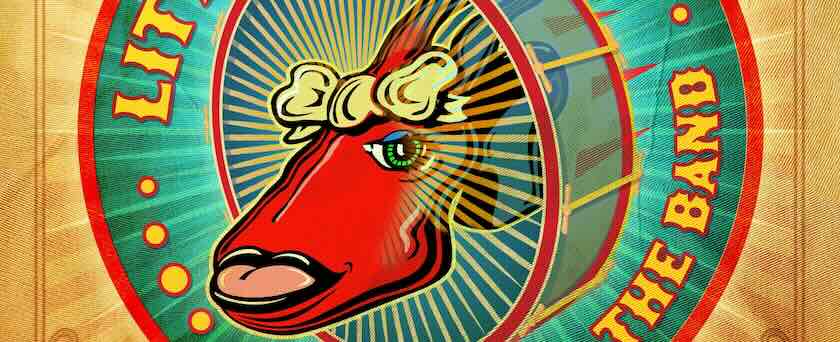Rock Music
Rock Music
The rock genre has been around for ages, spanning generations and social movements. From the early roots of rock music to the emergence of sub genres like psychedelic rock, there have been many iterations of rock music over the years. Popular rock musicians like the king of rock ‘n’ roll, Elvis Presley, or Olivia Rodrigo, a newcomer to pop punk (a subgenre of rock), have captivated mainstream audiences with their songs. Lesser known artists have also used the rock genre as a vehicle for their music with the advance of the indie rock subgenre. Overall, rock music has continued to evolve and change with the culture, and has a secure footing in the American and international music scene.
What Is the Definition of Rock Music?
The rock genre is a wide net that catches a lot of musical groups. But what exactly makes a song “rock” music? While many people have a vague idea of what constitutes a rock song, it’s difficult to articulate the definition.
Rock music, also known as rock ‘n’ roll, has historically combined different elements of blues, country, and jazz music. Additionally, the use of amplified instruments elicits a powerful and energetic stage performance that has always characterized the genre. Today, you’ll often find rock musical groups have a strong lead vocalist, drummer, electric guitar player, and bass player.
Rock music is also the umbrella term that encompasses many subgenres that have popped up over the years, including glam rock, alternative rock, and post-rock. These subgenres retain some of the elements that characterize rock music while also adding their own unique spin. For instance, glam rock first started in Britain during the ’70s and was noted for its use of flamboyant and androgynous costumes of the performers. An example of a well-known glam rock musical artist is David Bowie during his Ziggy Stardust era.
What Are the Characteristics of Rock Music?
Though the exact definition of rock music may be more fluid than fixed, there are certain characteristics that define the genre. Some of the characteristics that distinguish rock music include:
- Powerful vocals: In most rock songs, listeners hear the vocals of a powerful and engaging lead singer. Typically this singer has a unique voice that stands out from the music.
- High energy levels: Originally appealing to teenagers and young people, rock music is typically characterized by strong energy levels.
- Strong beat: Many rock songs are written in a 4/4 time signature while also featuring heavy guitar riffs and captivating melodies. However, the tempos of rock songs may vary.
- Electric instruments: The rock genre is noted for its use of amplified instruments. The most common instruments found on the stage of a rock performance are an electric guitar, electric bass, drum set, and keyboards.
- Perceptive lyrics: Some of the most popular and genre-defining songs of rock music have insightful and perceptive lyrics spanning subjects such as politics, love, and religion.
History of the Genre
Rock music started in the late 1940s and has continued to evolve into new music today. From the early years of rock that incorporated elements of blues and gospel music to later years that infused characteristics of pop and classical music into songs, there has been a wide variety of rock music.
The 1940s and 1950s: The Roots of Rock ‘n’ Roll
Some of the earliest musicians in the genre had their backgrounds in gospel and blues. Little Richard and Fats Domino are some of the leading figures in the early rock movement of the late 1940s. However, it’s important to note that these musicians didn’t label themselves as rock musicians at the time, though they are now credited and recognized as pioneers of the rock genre.
The coining of the phrase “rock ‘n’ roll” didn’t happen until 1951. An Ohio-based radio jockey, Alan Freed, was the first person to publicly say this phrase. From the 1950s onwards, rock music continued to grow in popularity, with famous musicians such as Chuck Berry, Elvis Presley, and Jerry Lee Lewis singing in the rock genre.
The 1960s and 1970s: The Counterculture Revolution
Though the rock genre had its roots in American cities, British bands soon took hold of the American public in what is later known as the British invasion. In the 1960s, British bands like The Beatles and The Rolling Stones quickly took over the charts and American radio time.
Bob Dylan, though originally a Folk singer, became known for his rock songs. As a lyricist, he wrote many songs that spoke to the counterculture era of the 1960s. Some of the themes in his work include some of the most pressing issues of this time, including the Vietnam War, the Civil Rights Movement, and other issues of social injustice.
In the mid-1970s, there was a shift from the commercialization and popularity of rock to a more rebellious and anti-establishment attitude. The punk rock movement of this time period featured rockers like The Ramones, Blondie, and The Sex Pistols, who espoused this aggressive musical style and attitude.
The 1980s and 1990s: Experimentation With Sound
This time period in the rock genre is characterized by the emergence of metal and alternative rock subgenres. In the 1980s, metal bands like Metallica and Kiss were extremely popular at the time, which brought the rock genre back to mainstream audiences.
Additionally, alternative rock soon became popular in the late 80s and early 90s. This type of rock subgenre is noted for its willingness to experiment with sound and lyrics. Some of the noteworthy alternative bands to become popular during this era include Nirvana, Pearl Jam, and Soundgarden.
The 2000s and 2010s: Return to Roots
In this time period, popular rock music returned closer to its original roots. Bands like the Black Keys and the White Stripes took inspiration from classic rock bands and blues music of the 1960s. Subgenres like garage rock and post-punk became popular in this era of rock music. Other popular bands during this time frame also include Blink-182, Arctic Monkeys, and the Foo Fighters.
Current
Rock music isn’t quite as popular as it once was, as electronic dance and hip hop have become some of the genres most listened to in the US. However, the genre of rock continues to evolve and capture audiences’ attention. The pop-punk subgenre of rock has received a recent resurgence in popularity due to musical artists such as Olivia Rodrigo and Machine Gun Kelly, who have released popular albums in this musical style. Another contemporary rock band, Greta Van Fleet takes cues from hard rock and blues.
Though rock music has continued to evolve since its first emergence in the late 1940s, the power and influence of this genre remain a steady force in the American music landscape. New musical artists and groups continue to explore the rock genre in their music. Fans of this genre appreciate the unique sounds and lyrics of contemporary rock music that continues to evolve with the times. We review contemporary rock artists and musical groups who continue to explore the genre and put out new albums.






